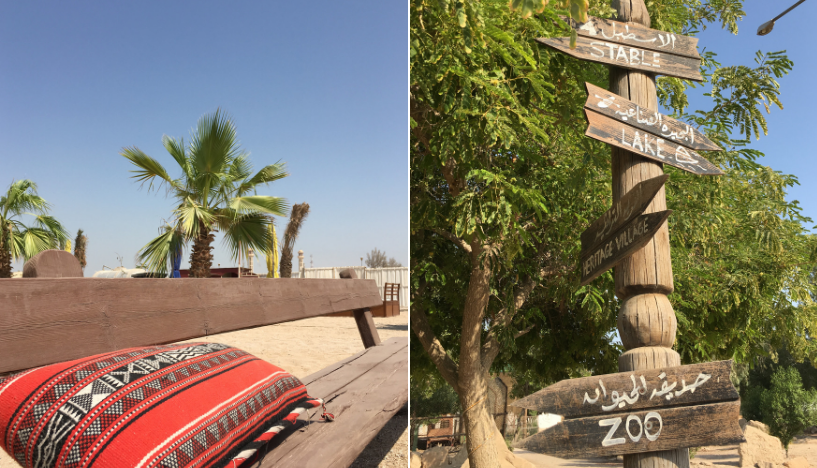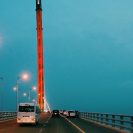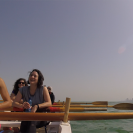Ask most people if they fancy a journey to Failaka and typically the reply can be a bit dismissive or uncomprehending, “Why go? There’s nothing to do there”, “It’s derelict after the invasion!” But there is something deeply compelling about Failaka, only 20 KM from Kuwait’s coastline.
This island has resonated throughout thousands of years of human existence due to its geographical importance as one of the Persian Gulf’s natural harbours, and remains of significant archaeological interest having been home to the Mesopotamians, Dilmans, Babylonians and Ancient Greeks previously. Sumerian-Akkadian cuneiform carvings have been found, the remains of Hellenistic forts and temples exist; Byzantine era Nestorian Christian churches have been excavated, and 9th Century AD pottery has been uncovered. People have lived, breathed and worked this land from before the third millennium BC to the Twentieth Century with the 21st Century offering the scent of a renaissance to this giant of an outpost.
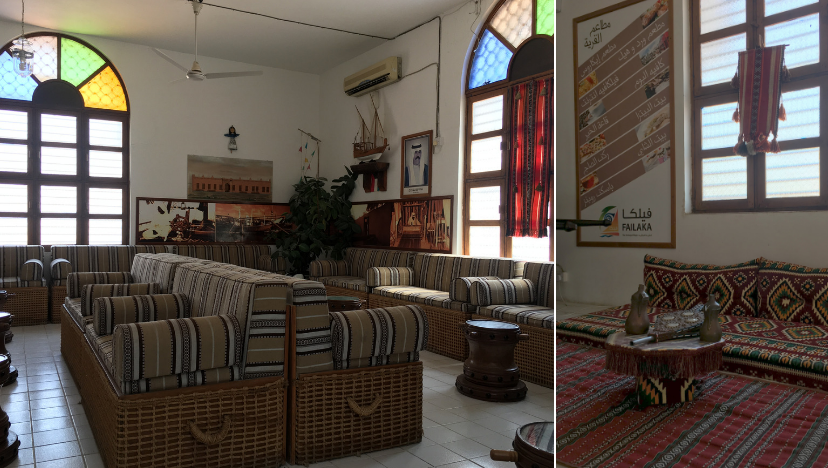
Armed with adventure in mind, I’d seen something about buying tickets to Failaka at a tiny booth in Marina Crescent way back in 2013. Marching down, the booth has been replaced with a sizeable air-conditioned office with a large glass front and a model dhow in the window. The sales person is very helpful yet only after I’ve been sold my ticket does he go into the details of the buffet lunch and activities included in the price, and that the heritage village is within a resort. “The boat leaves at 12 noon so be here at 11.30 am” the salesperson emphatically asked us. Friday morning rolled around and being British my friend was waiting by 10.58 am. Being excited I rocked up at 11 am. We indulged in the latest Starbucks at the edge of the Marina and then wandered along to the offices. We were then directed to an impressive boat with top and lower deck, glamorously furnished and with AC blasting. At noon they gathered us up and put us onto a much more spartan water taxi where we waited until 12.15pm when four generations of two Kuwaiti families ambled along the pier and onto the boat. It turns out one of the families were from Failaka and still owned three houses on the island.
Less than half an hour later the waters turned an arresting aquamarine in the sunlight and became sparklingly clear. The boat manoeuvred around the harbour walls made of natural stone. Failaka was upon us, its beaches sandy white set against a sky so blue it felt like we were journeying into a completely different place, a holiday destination.
After bouncing up the blue, air-filled plastic buoy jetty, which is a joy in itself, we took a bus the very few meters it took to reach the Heritage Village Resort reception where we were met with a cold glass of Tang and shown a map to the resort so we could plan our day.
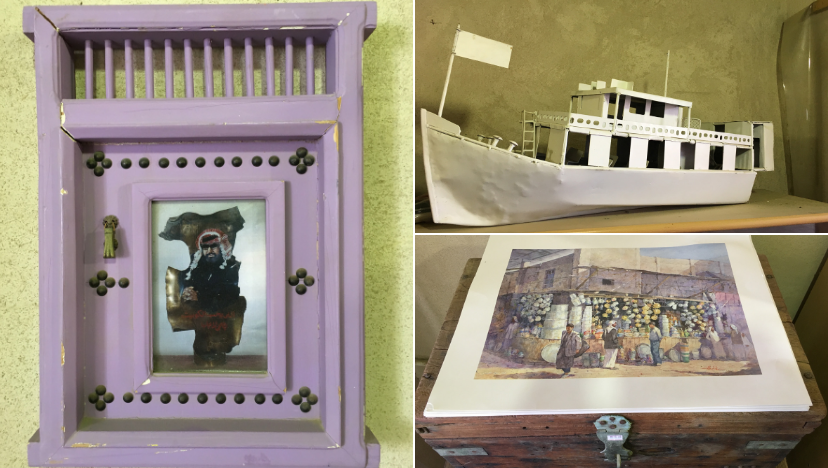
By this time, it was just after 1 pm and we decided to build up our energy for the next 8 hours by chowing down at the buffet, secretly hoping we’d walk off our indulgences while exploring. The food was fresh, colorful and delicious with plenty for my vegetarian partner to fill up on and lots of chicken, beef and fish for me. Almost a bucket of Om Ali for dessert followed but we could have chosen anything from a center-table laden with sweet delights. The buffet is open for two hours and we saw many of the island’s guests wander in at that point. Apart from the family on the boat it turned out we were only sharing the island with a boys’ soccer group. November is the ideal time to visit Failaka, with it getting steadily busier as the season goes on. “This is nothing”, we’re told. “200 hundred people a day come in the winter!”
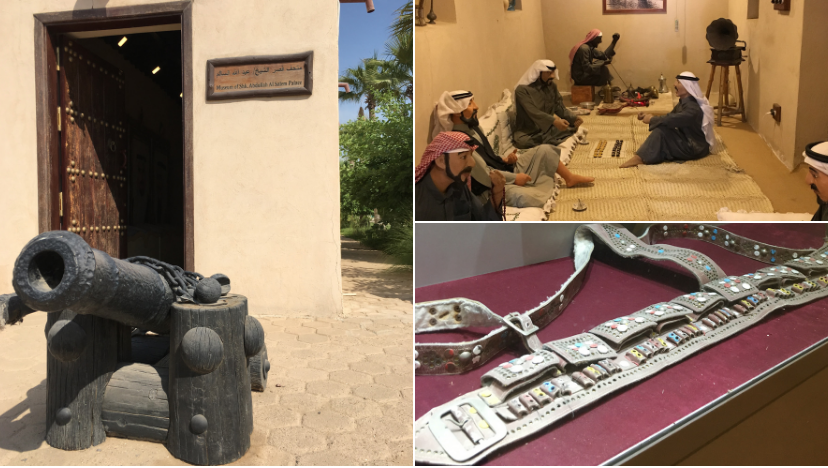
The first adventure was to “get the culture out of the way” and we headed across the vast courtyard to the Palace Museum guided by the sight of cannons set at either side. We opened shut doors to find displays of island life, 20th century photographs of excavations, a diwaniya with an antique gramophone in the corner, a guns and ammo collection alongside the prerequisite taxidermy, a family room, and a bedroom fit for Sheikh Abdullah Al-Salem Al-Mubarak Al-Sabah.
Meandering through the resort was a delight, with overgrown green grass and lush bushes lining the walkways, birds singing and the occasional cat sunning itself or being fed by the security guards. We found pottery and art shops, an AstroTurf soccer pitch, a large pool with flume slides [be they short], a Caribbean style hotel with a stunning courtyard and spiral iron staircase feature.
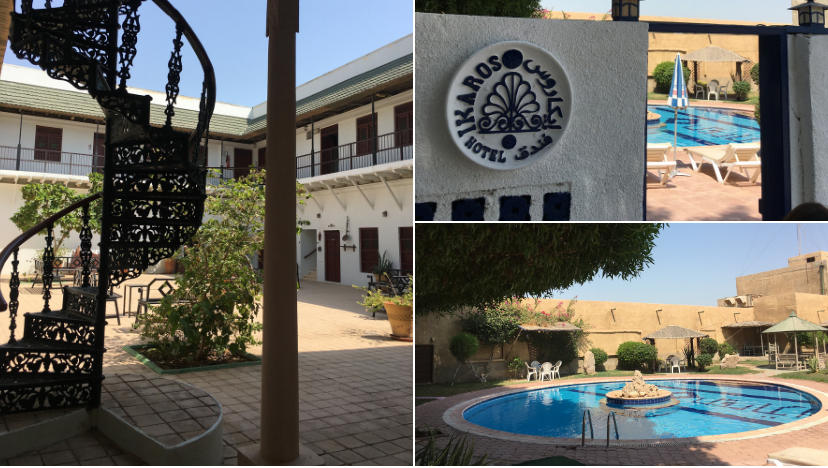
The walk took us up to a straight road that runs along the top of the resort and we crossed over to view the zoo directly across from us. It was one single, large fenced off area filled with deer, goats, chickens, geese and a mother cat taking a break from her four boisterous kittens. We came packing carrots and green apples, as we’d known about the horses we wanted to ride and had planned on bringing them a few nibbles. We gave the greedy goats most of the carrots and the single baboon in its small, much-repaired cage, devoured the apples but discarding the skin. Beggars can be choosers, it turns out!
Having spied and taken note of the location of the stables, we rushed back to reception in time to catch the island bus tour at 4 pm. It was on this tour that the true devastation on the island could be seen, with derelict buildings, bullet strafed walls ridden with holes, collapsed mortared homes, and chalets where once families would play by the beaches completely torn apart. But here there were signs of activity; wildlife had made these ruins their homes and chattering birds busied themselves surviving well in the rubble, protected by what had been destroyed by people. It reminded me of Chernobyl, but only in the way that similarly there the flora and fauna have reclaimed the area as their own after human arrogance ravaged it so badly.
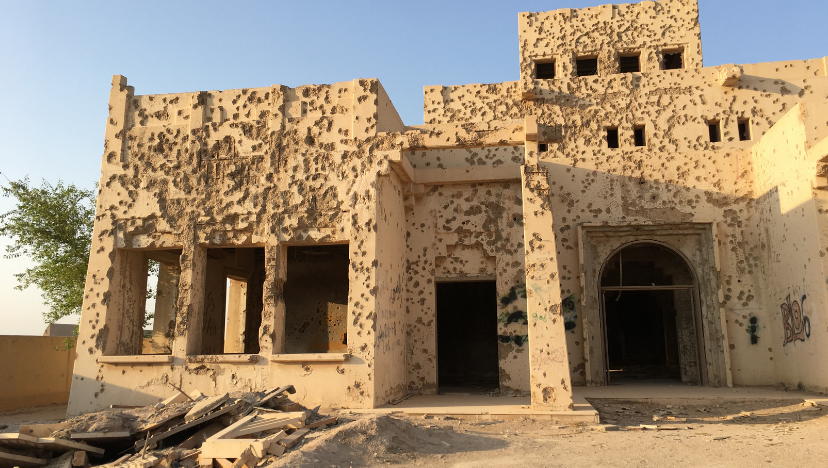
We stop on the bus tour to investigate the tank graveyard, and my friend stays on the bus as she feels it odd to take a selfie with a weapon. I agree, but want to see for myself the bullet holes that mark where people once sat, under fire. It is an emotional journey being on Failaka, at times filled with joy at the happy play of animals or the gorgeous weather one moment and then being presented with the horrors of war the next. It’s a weird rollercoaster I didn’t expect to feel, and it is exhausting.
Subdued, we drive on to where the camels are kept. A blonde herd of dromedary tall ships being fed by their caretakers, themselves sun wizened. The beasts are wonderfully majestic and all thoughts of 1991 are put to the back of our minds as we all pile out of the bus to get closer to these incredible creatures.
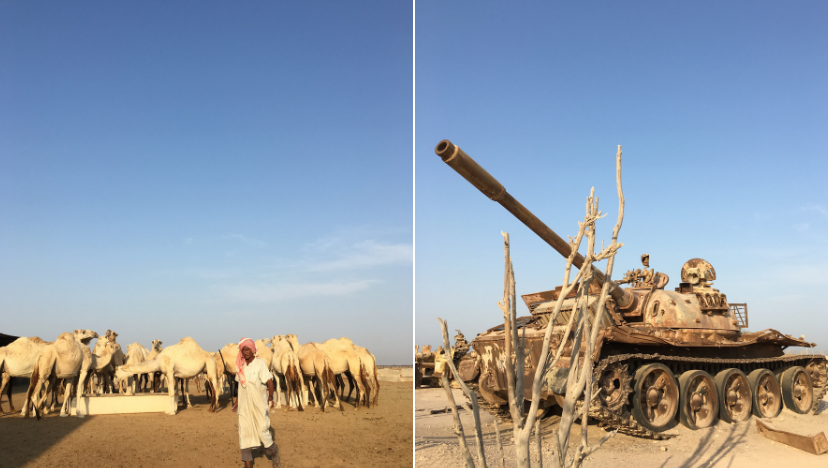
It’s then back to the resort and we check out the pottery for sale and head to the mini-mart to buy water and juice. It’s unsurprisingly well stocked as people often stay overnight at the resort in the apartments or at the hotel. Half of the market space is an arcade, so if you feel the need for some artificial brain stimulation you can get it here with blinking lights and the buzz of machines. You can relax and play pool as well, or sit and read at the tables although it is very cold what with the AC and all the fridges and freezers lining the shop walls. Bring layers of clothes with you for this trip!
We peeled off our cardigans and returned outdoors to the stables to jump on the backs of the horses which have been saddled up, ready for tourists. We feed them the rest of the fresh fruit and veg we have with us and the stable hands happily show us Jennie, their donkey, grazing out the back separate from the horses. Around the corner is a painted wooden cart and it looks like this may be used for tourists in late winter. They also tell us that there’s sometimes a camel for rides back in the center of the resort, but it’s not there every day. It certainly was not there on this day.
Dusk is falling and we walk down to the beach resort spotting large tables and benches to rest on. Set in the sand are tiled showers and running water to clean up with after you’ve been swimming and kayaking in, or jet-skiing and paddle boarding on, the waters. An evening swim is exactly what’s in order and the pier wrapped in twinkling fairy-lights is beautiful to behold as you float in the sea. It’s been a long day with a few more hours to go but it’s too dark now to head up to the lake where there are paddle boats to use. We chose the 12 noon-10 pm day trip but may try the 10 am-5 pm day trip the next time as it will be cooler weather and we can do more of the outdoorsy sporty stuff, of which there really is plenty.
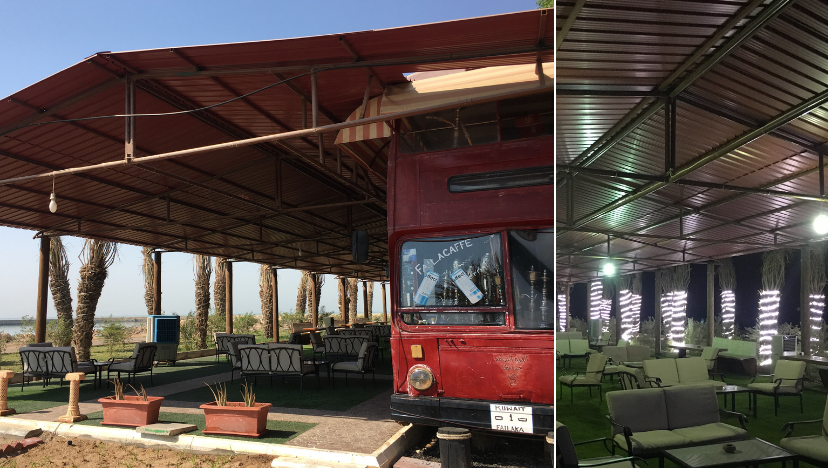
When night finally comes we are relaxing with shisha and coffee next to a double decker London bus being given service with a massive smile by a young man who lives on Failaka but who was born and bred in Bangladesh. We saw many homes and evidence of families returning to Failaka when we were on the bus tour, and with these people comes day-to-day business needs. Life is returning to the island and tourism is a great way to inject some money into the local economy. The island staff that work within the Ikarus resort have a genuinely helpful and kind presence, as do the security guards who are all very smartly dressed with their uniforms in mint condition and their shoes brightly polished. The people take pride and joy in being here, and it’s no wonder as Failaka doesn’t fail to prove that it remains an important island and will resurge within its own good time. Well worth a visit.
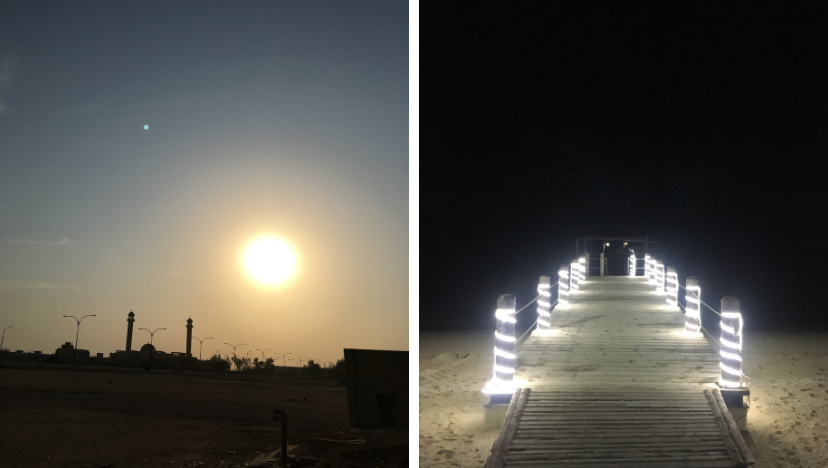
For more information follow @ikarusmarine on Instagram, or pop along to the ticket offices of IKARUS United Marine Services near the Starbucks at the end of Marina Crescent, Salmiya.

